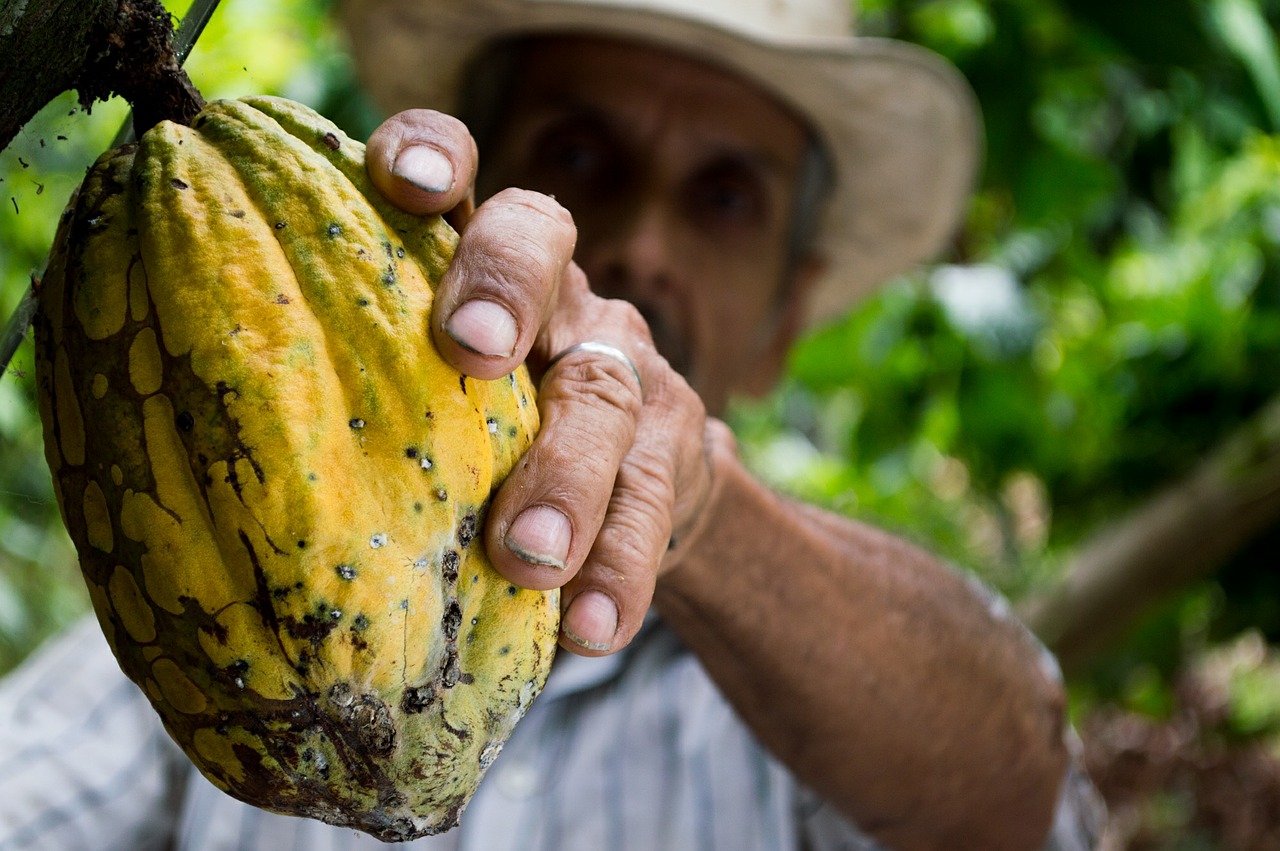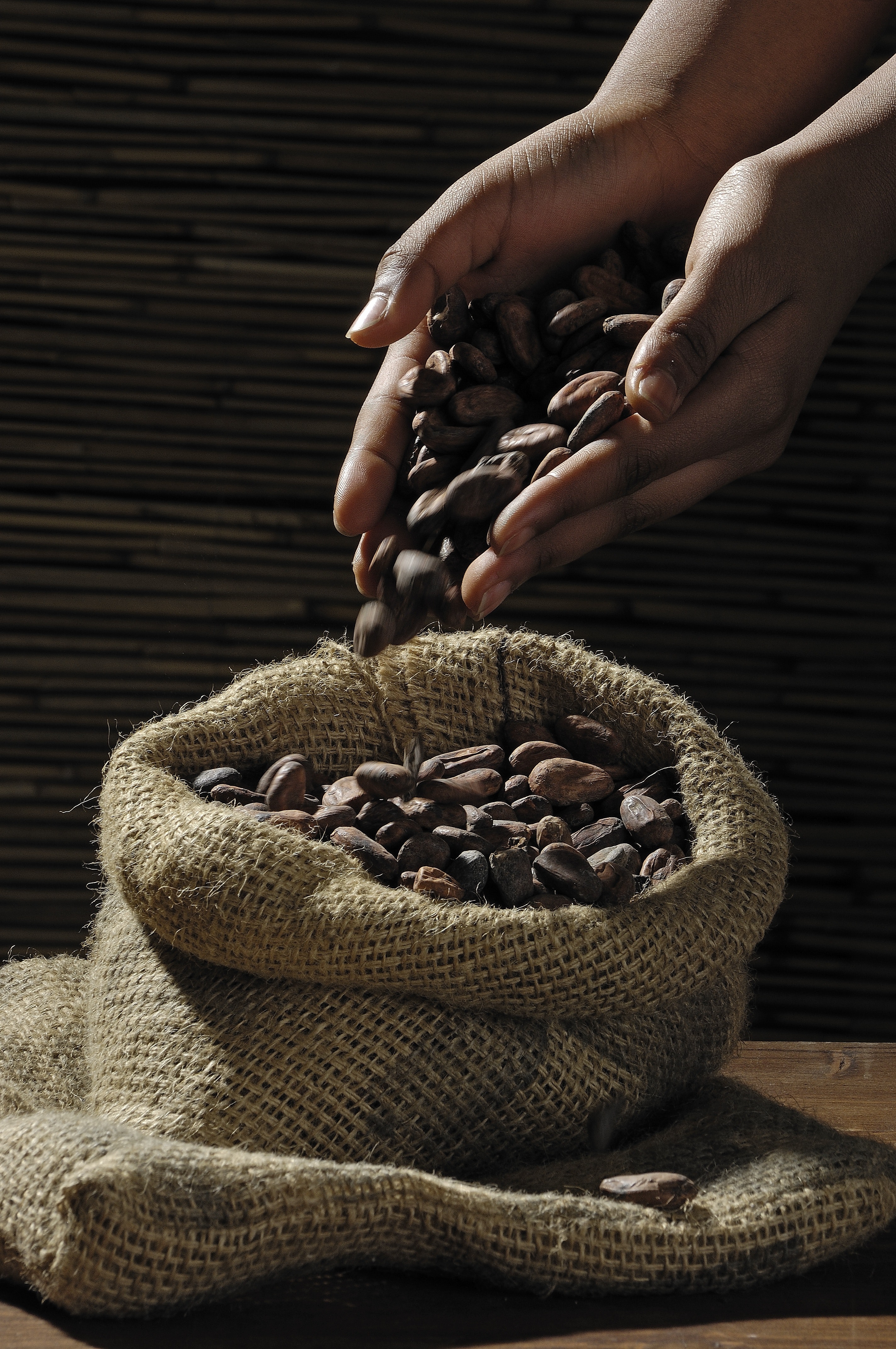
The word “chocolate” comes from the classical Nahuatl word “chocolātl” that entered the English language from the Spanish language.
The origins of chocolate can be traced back to the ancient civilizations of the Mayans and the Aztec in Mesoamerica (Central America and Mexico).
Cultivation, consumption and cultural use of cacao were extensive in that area where the cacao tree is native. When pollinated, the seed of the tree eventually forms a kind of sheath, or ear 20” long hanging from the tree trunk itself. Within the sheath are 30 to 40 brownish-red almond-shaped beans embedded in a sweet viscous pulp. While the beans themselves are bitter due to the alkaloids within them, the sweet pulp may have been the first element consumed by humans.
The Mayans seasoned their chocolate by mixing the roasted cacao seed paste into a drink with water, chili peppers and cornmeal, transferring the mixture repeatedly between pots until the top was covered with a thick foam.
The Aztecs, who unlike the Mayans drank chocolate cold, believed that cacao seeds were the gift of Quetzalcoatl, the god of wisdom, and the seeds once had so much value that they were used as a form of currency where one turkey for example was worth 100 cacao beans and one fresh avocado cost three beans.
It was believed that chocolate has aphrodisiac powers that give the drinker strength. Today, such drinks are also known as “Chilate” and are made by locals in the South of Mexico.
Earliest evidence of domestication of the cacao plant dates to the Olmec culture from the Preclassic-period. The Olmecs used it for religious rituals or as a medicinal drink, with no recipes for personal use. Little evidence remains of how the beverage was processed.
Until the 16th century, no European had ever heard of the popular drink and it was only after its arrival to Europe that sugar was added to it, and it became popular throughout society, first among the ruling classes and then among the common people. However, chocolate was exclusively for drinking until the early Victorian times when a technique for making solid ‘eating’ chocolate was devised.
In the 18th century the Swedish botanist, Carolus Linnaeus, renamed the cocoa tree giving it the Greek name Theobroma Cacao, now its official botanical name, which literally means ‘food of the Gods’.

